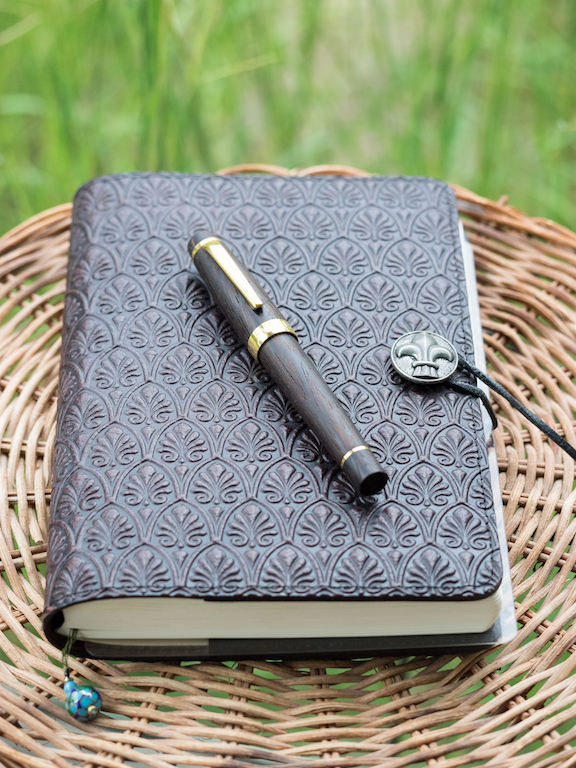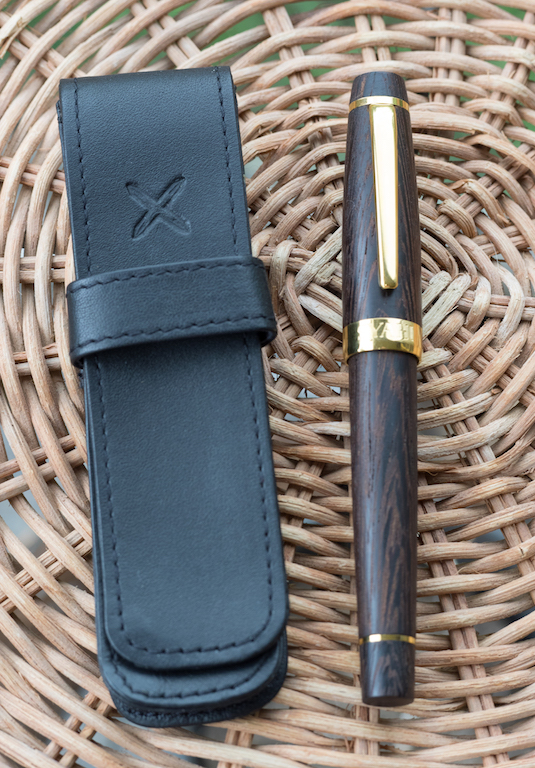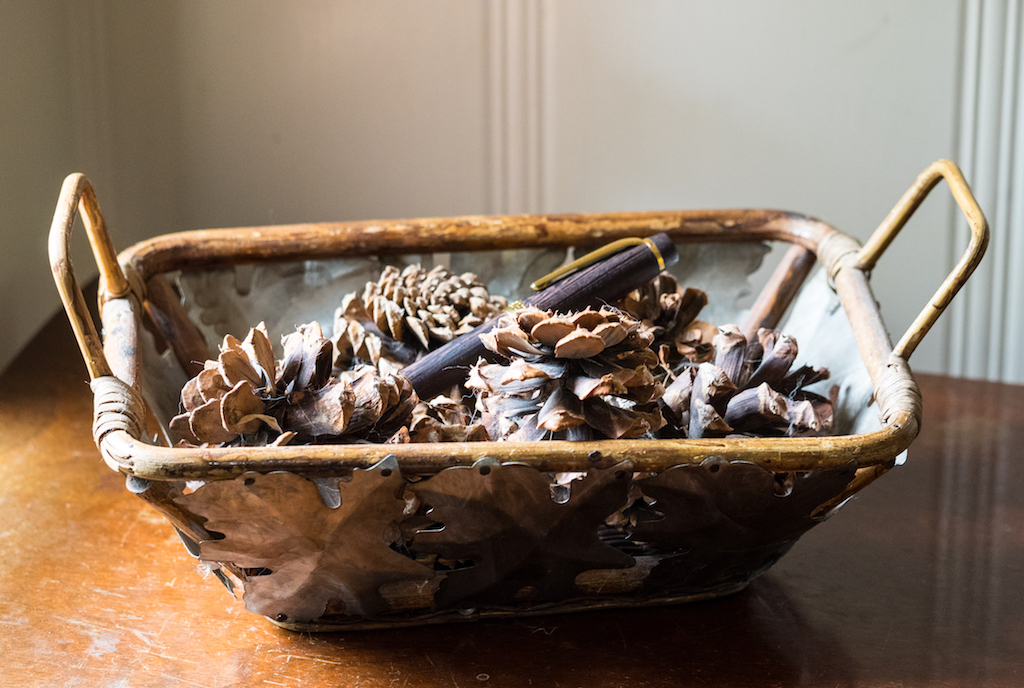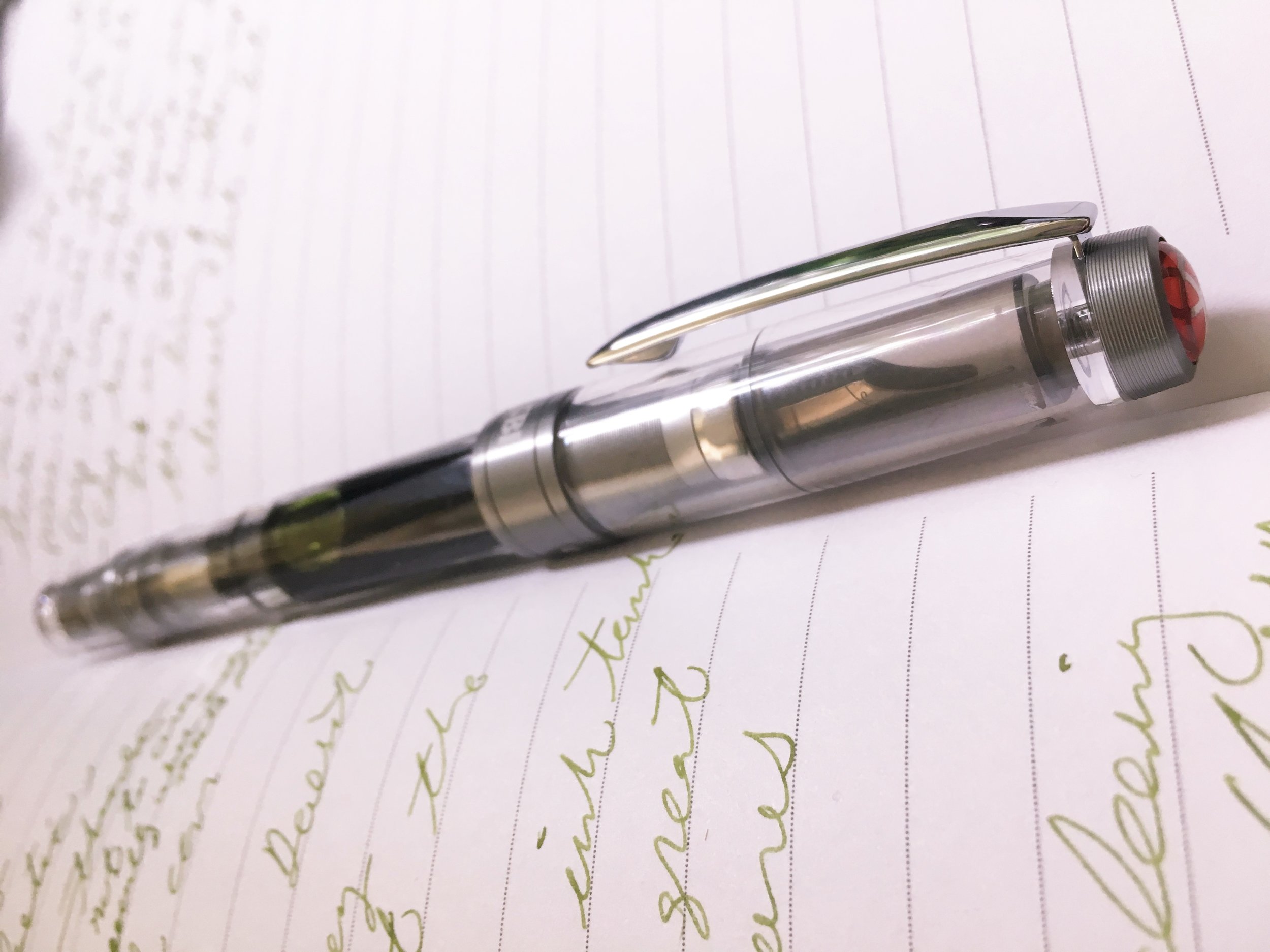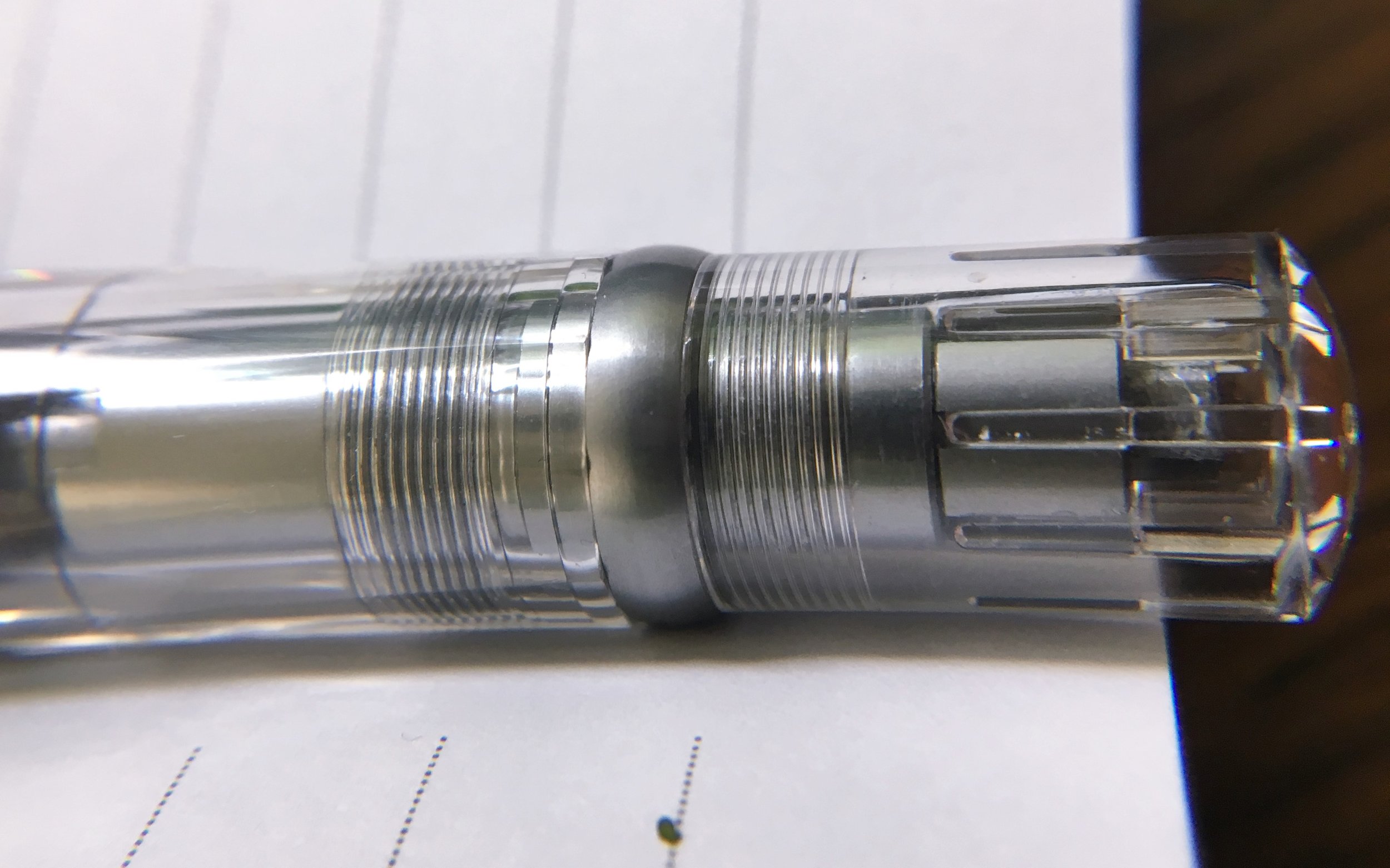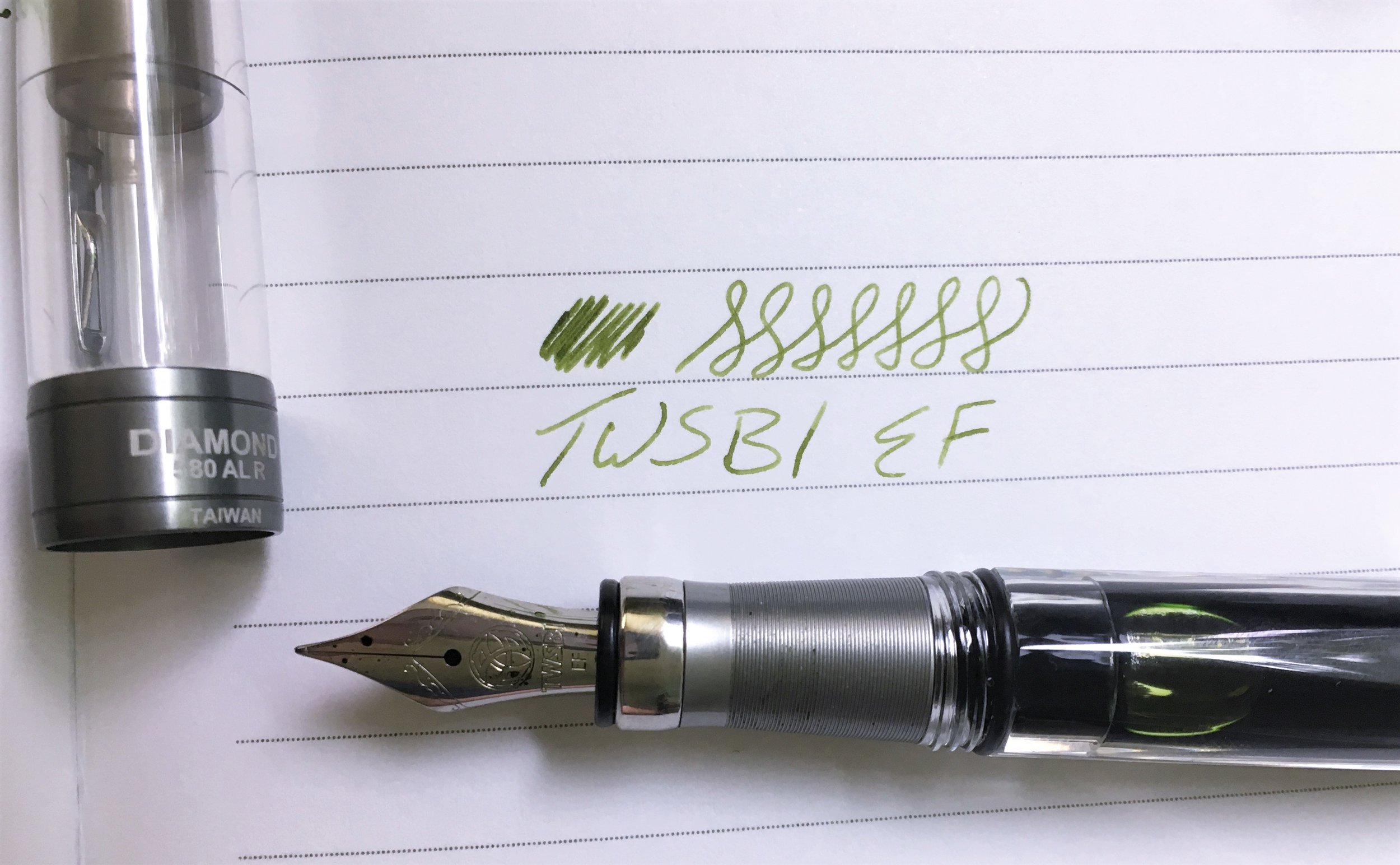(Jeff Abbott is a regular contributor at The Pen Addict. You can find more from Jeff online at Draft Evolution and Twitter.)
The Opus 88 Fantasia fountain pen is unlike any other I've ever used. As an eyedropper pen, it's a similar to other eyedropper pens I've used, such as the Franklin Christoph pens I use. But what's unique about this one when compared to classic eyedroppers is the inclusion of a shut off valve to stop ink flow. The unique design as well as the translucent body and colorful cap make this an instant favorite.
The particular model I have is a dark teal body paired with a black ebonite cap that also has a few colorful stripes to add visual interest. The stripes on the cap are green, dark red, and a light yellow. The stripes are different widths and really draw my eye to them. The clip is chrome and is incredibly strong.
The cap is secured/removed with threads, and only requires four turns to operate completely. The overall length of the pen is quite short at only 4.5 inches or 11.5cm when capped. When opened and not posted, the length is just a hair over four inches, but the full posted length is a more comfortable 5.75 inches or 14.5cm.
Since there aren't any metal parts that make up the body of this pen, it's a lightweight instrument. The grip section is a bit short for my liking, not providing quite enough surface area for my fingers to rest comfortably. I didn't notice this much while writing, but trying to find a comfortable writing grip at first was a challenge. It's workable, but you are definitely reminded that this is a compact pen where the main focus is ink capacity and portability.
The nib included on this pen is a medium stainless steel JoWo nib. Vanness offers Fine, Medium, and Broad, and I've found that the medium on my unit is much closer to a European fine. I've always had good luck with JoWo nibs, and this one is no exception. It's an incredibly smooth and reliable writer with just a small of flex when pressure is applied on downstrokes. There is some light decoration on the nib along with the Opus 88 name and the size indicator. I've been really happy with this nib and how it writes.
Writing with this pen can take some practice since the grip is so small. The overall length of the pen doesn't bother me at all because I usually prefer to write without the cap posted. The grip has caused me some grief, however. If there were just a bit more space for my fingers, it wouldn't be an issue. It's difficult to find a sweet spot that doesn't involve gripping the cap threads or dipping my fingers onto the nib or feed accidentally, resulting in inky fingertips that transfer ink back to the grip. After some practice, I've found the sweet spot for my grip, but it took some time.
The real selling feature for this pen, along with the beautiful exterior, is the filling mechanism. It's a classic eyedropper with a twist: there's a end blind cap that operates a shut off valve. This is something I've come to love with vacuum fillers. I like being able to totally close off the ink reservoir from the feed so I can travel or just for additional security when being transported.
To fill the pen, simply unscrew the section and use the included eyedropper to fill the reservoir with ink. I didn't measure exactly, but I got a little over 2ml of ink when filling. For such a small pen, that's extraordinary. To write, back out the blind cap a few turns to allow the ink to flow. In practice, this has worked flawlessly for me. And, for quick notes, you can write for about half a full page without opening the blind cap.
I've been able to operate the blind cap easily with my fingers, but there's a nifty screwdriver mechanism built into the top of the cap. You can use the top of the cap as a screwdriver for operating the blind cap, which has two centered cross grooves (like the top of a Philips screw head). It's a novel idea, but not one that is required to operate the pen.
The Opus 88 Fantasia has been an incredibly fun and satisfying pen to use over the past several weeks. I wasn't sure what I would think of it after unboxing it. At first glance, it looks very practical and scientific in a way. After getting to know it, it's a practical piece of art that's a joy to use.
If you're interested in the Opus 88 Fantasia, they come in several color combinations for $125 a piece. The price if fair given the quality of the materials and craftsmanship, not to mention the unique filling mechanism.
(Vanness Pens provided this product at no charge to The Pen Addict for review purposes.)
Enjoy reading The Pen Addict? Then consider becoming a member to receive additional weekly content, giveaways, and discounts in The Pen Addict shop. Plus, you support me and the site directly, for which I am very grateful.
Membership starts at just $5/month, with a discounted annual option available. To find out more about membership click here and join us!







